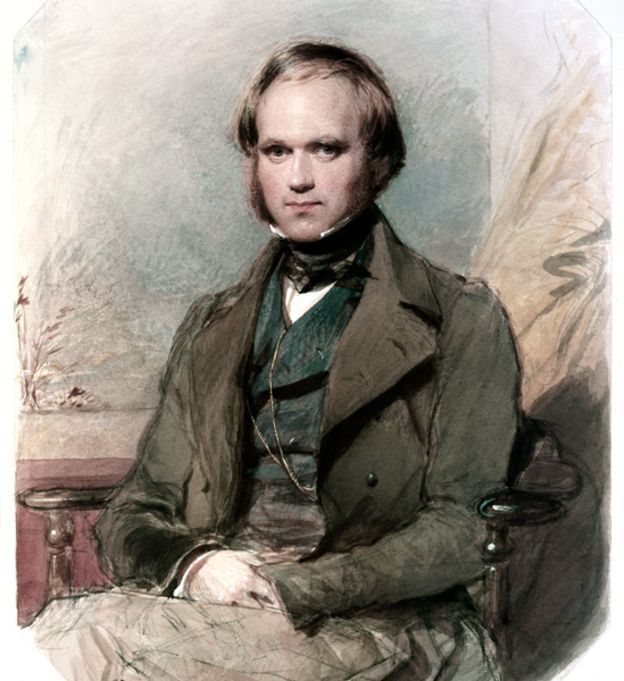Five experiments by Darwin that you can do at home
This is a list of five experiments carried out by Darwin that you can replicate, and what the great English naturalist sought to demonstrate with them.

Charles Darwin's curiosity for the natural world was so great, that when he focused on something his interest not only became a passion but derived into months or years of meticulous experiments. This November 24th marks the 160th anniversary of the publication of "The Origin of Species" and many will remember the inspiration Darwin found for his book in South America during his five-year voyage aboard the Beagle.
But on his return, the biologist spent decades experimenting at his home in Kent, just over an hour from London, in search of evidence for his theory of evolution by natural selection. Darwin did not give up his experiments even though much of his adult life suffered from stomach problems, dizziness, extreme fatigue, and other debilitating symptoms.
Darwin had health problems and only someone who loved to study nature would have persevered as he did through decades of experiments and careful observation. The theory of natural selection, with all its importance, can be seen as a consequence of Darwin's intense love and curiosity for the natural world. This is a list of five experiments carried out by Darwin that you can replicate, and what the great English naturalist sought to demonstrate with them.
Towards the light
Darwin noticed how the bud of a grass, Phalaris canarienses, bent towards the light of a lamp. "We were surprised to see how the top determined the direction of the curvature of the bottom," Darwin wrote in his book "The Power of Movement in Plants," which he wrote with his son Francis. To test whether the top of the bud was the light-sensitive part, the biologist covered the tip of the bud with a "hat" of opaque material. The result was that the plant no longer bent into the light.
You can do the same experiment: plant a seed, watch the first bud bend into the light of a lamp and then cover the tip with a small "hat" of aluminum foil to see the difference. Darwin was a careful and patient experimenter, but his true genius lay in his ability to ask the right questions. In this experiment, Darwin's key idea is that the part of a plant that responds to a stimulus, in this case, light, is not necessarily the same part that perceives the stimulus. And that observation leads to an inevitable conclusion, something transports those signals from one part of the plant to another. Darwin had indeed discovered plant hormones, which are still one of the most active areas of research in plant physiology.
Death in droves
In 1857 Darwin experimented with weeds in his garden and proved that the vast majority of germinating seeds did not survive. You can do the same by outlining a small plot of land on which you leave the soil exposed and marking the spot where each seed emerges. "Every day I marked the little weeds that emerged during March, April, and May. Of the 357 that emerged, 277 have already perished, mainly due to slugs," Darwin wrote.
Why was the naturalist so interested in demonstrating the mass death of young organisms? In "The Origin of Species," Darwin writes: "Since more individuals are produced than can survive there must be a struggle for existence. The theory of natural selection was based on the idea, then described as the survival of the fittest by Herbert Spencer, that more individual organisms are born than can survive. Only the fittest reproduce and pass on their genes to the new generation. Darwin was interested in any example of this process in action, in this case, the death of most sprouts on a parcel of land.
Seeds in the water
Darwin spent more than a year testing the ability of seeds to survive in seawater. The experiment was crucial to respond to critics of the theory of evolution. The prevailing belief in Darwin's day was that animals and plants were found where God had placed them. Finding the same species in very distant places, sometimes on different continents, was considered proof of that divine design.
Darwin wanted to show that species can be dispersed at greater distances than people thought. So proving that seeds could survive for long periods in seawater and then germinate was important, because it implied that it was possible to disperse at great distances through ocean currents.
Another possibility considered by Darwin was the dispersion of seeds in the mud of the bird's legs. But were there seeds in the mud? Darwin collected three tablespoons of mud from the edge of a pond, which he kept covered in his study for six months, recording each of the seeds that germinated. And he counted a total of 537.
Carnivorous plants
One of Darwin's passions was barnacles. His desire to describe a single barnacle he had brought from South America resulted in eight years of studies and two books about these growing crustaceans attached to rocks hit by waves. But Darwin's letters reveal that in 1860 Darwin's new passion was carnivorous plants. The scientist even referred to one of them, Drosera rotundifolia or common sundew, as his "beloved Drosera". Darwin wanted to discover this plant's favorite diet and experimented with feeding it a wide variety of foods, from sugar to milk, oil, or gelatin.
Insectivorous plants were a wonderful example of plants that gradually evolve and develop an ability to do something that most plants cannot. It was obvious to Darwin that Drosera had evolved from one of the many plants that have glandular hairs for other reasons, as a defense against insects. And it could, in turn, evolve into something different like the so-called Venus flycatcher.
Coevolution
Darwin studied the relationship between plants and the insects that pollinate them, a dependence resulting from the co-evolution of two different species. The scientist experimented with red clover plants. And you can do something similar. Before the clover blooms, cover some parts of the plant with an insectproof mesh. Then compare the number of seeds produced by the flowers covered or exposed. One of the most famous cases of coevolution is that of a famous Darwin prediction.
The naturalist received from a famous English horticulturist, James Bateman, several specimens of a striking orchid from Madagascar, the star of Bethlehem, whose scientific name is Angraecum sesquipedale and which is known as the "Darwin's orchid". The scientist was struck by the great length of the nectary or channel (about 30 cm), at the bottom of which is the nectar. For Darwin, it was clear that if an orchid had a nectary of about 30 cm, that nectary had evolved for a reason.
He cultivated Angraecum in his greenhouse and anticipated that it should be pollinated by a moth with a proboscis (tongue) long enough to reach the nectar. It took nearly 40 years for a month with these characteristics to be discovered in Madagascar. And it took more than a century to prove that the moth pollinates the orchid. The moth was described as Xanthopan morganii praedicta, whose epithet alludes to Darwin's prediction of its existence.
A message from Darwin to all
Darwin's experiments have a great message for all of us, according to Ken Thompson, a professor at the University of Sheffield. Darwin never took anything for granted," he told BBC World. He saw the same everyday things that we all see, but he always looked to them for deep meaning. The world is full of questions for those who have the eyes to see them.




